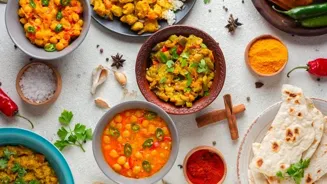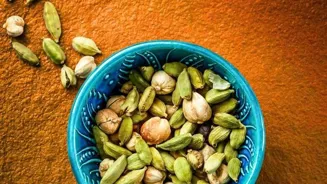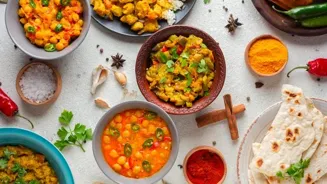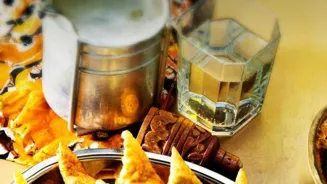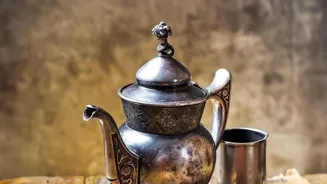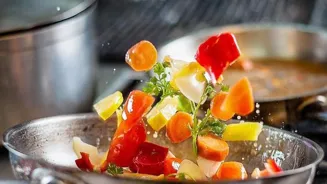Indian Flavours on the World's Plate: 10 Dishes Showing the Influence. Discover how India's culinary heritage has shaped global cuisine. Read more to explore the surprising ways Indian culture shines through
food worldwide!" In a world where food is not just sustenance but a cultural expression, Indian cuisine stands out for its rich tapestry of flavors, spices, and cooking techniques. From the
Namaste, food lovers! From the snow-capped Himalayas to the sunny beaches of Kerala, India's food culture is as diverse as its landscape. For centuries, it's been a vibrant mix of spices, cooking styles, and unique ingredients, with influences from across Asia and Europe.
But did you know Indian cuisine hasn't just stayed within the country’s borders? It has travelled the globe, subtly shaping, and sometimes boldly transforming, how the world eats. Let’s explore ten surprising ways Indian culture shines through food in different corners of the earth.
We'll look at dishes that have borrowed flavours, techniques or even core ingredients, all thanks to the rich culinary heritage of India. Get ready for a delicious journey!
Lentils' Global Trot
Simple as it sounds, the humble lentil (or 'dal' as we call it here) has made its way into kitchens worldwide. From the Middle East's comforting lentil soups to European stews, lentils provide a nutty flavour and a protein boost.
In Ethiopia, you'll find 'Misir Wot', a spicy red lentil stew that bears a striking resemblance to Indian dals in both preparation and taste.
The journey of the lentil shows how a basic ingredient, central to Indian cooking, can become a staple across continents, adapting to local tastes while retaining its Indian roots. It shows that healthy and yummy can travel far!
Spices
The Aroma that Conquered: We all know Indians adore spices. But the degree to which Indian spices have infiltrated global cuisine is something to marvel at.
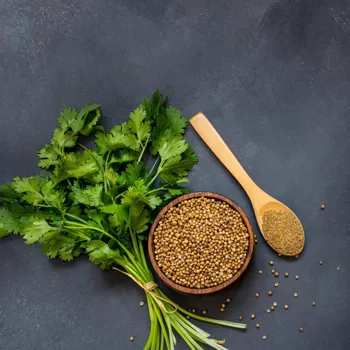
Turmeric, once almost exclusively used in Indian cooking for its colour and medicinal properties, now stars in smoothies worldwide for its anti-inflammatory powers.
Cumin gives Middle Eastern dishes like hummus and falafel their distinctive taste, while coriander (dhaniya) brightens up Latin American salsas. The constant demand for spices from the Malabar Coast helped set entire trade routes in motion. It is because of this that the world loves Indian spices.
Rice is Nice Everywhere
While rice is enjoyed in many places, the way it’s prepared and spiced in Indian cuisine has had a strong impact. Think of pilaf, a rice dish cooked in broth with spices. It’s a common feature in many Middle Eastern, Central Asian, and even Mediterranean countries.
Look at Spanish Paella, a colourful rice dish, which many believe originally got its saffron flavoring and complex technique from Indian rice dishes passed down through Persians and Arabs during the medieval era.
The journey of spiced rice dishes showcases how culinary ideas can spread and evolve, blending into new cultures and tastes.
Bread Around the World
Flatbreads are integral to the cuisines of many cultures. The influence may be harder to discern, but it is there. The Indian chapati, naan, and paratha all share characteristics with similar breads found across the Middle East, Central Asia, and parts of Africa.
The texture and the way the bread is prepared, whether cooked in an oven like the naan or on a flat pan like chapati, have influenced production. Some historians believe that Indian flatbreads, via the ancient Silk Road, could have contributed to the development of similar foods in other regions.
Curry in a Hurry
Perhaps the most obvious example of Indian culinary influence is 'curry'. Though the word itself is often a simplification of complex dishes, the concept of simmering vegetables or pulses in a spiced gravy has been enthusiastically adopted worldwide.
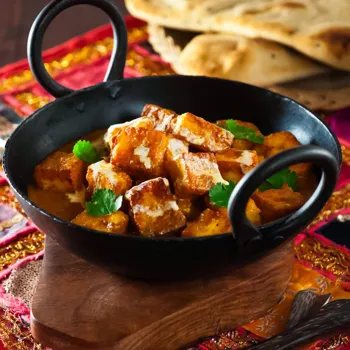
Thailand has its green and red curries, Vietnam has its own versions, and even the UK has embraced 'curry' as a national favourite. Each region puts its own spin on it, yet the core concept – a flavorful, spiced dish served with rice or bread – is unmistakably inspired by Indian cuisine.
Chai Goes Hi-Fi
The simple Indian tradition of spiced tea, or 'chai', has transformed into a global phenomenon. What started as a humble street drink in India is now a ubiquitous item in cafes from Seattle to Sydney. 'Chai lattes,' 'dirty chai', and countless variations are enjoyed worldwide.
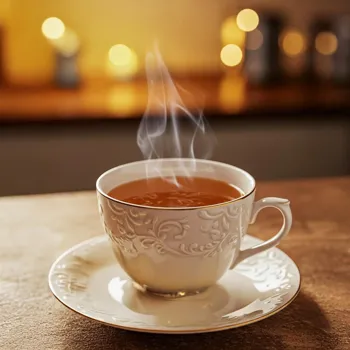
While the spices and preparation might vary, the essence of Indian chai – black tea brewed with milk, sugar, and a blend of aromatic spices – remains at the heart of the drink's popularity. Chai's journey from Indian homes to global coffee shops is a story of successful cultural export.
Yogurt's Tangy Takeover
Yogurt, often seen as a western health food, actually has deep roots in Indian culture. In India, we've enjoyed yogurt (or 'dahi') for centuries, using it in everything from refreshing drinks like lassi to flavourful raitas and marinades.
The Middle East, Greece, and other countries have also long embraced yogurt, likely due to Indian influence through trade and cultural exchange. Today, yogurt is a global dairy item.
Pickling Around the World
Pickling is an ancient method of preserving fruits and vegetables, and India boasts a diverse tradition of achars, or pickles. Made with a variety of fruits, vegetables, spices, and oils, Indian pickles are known for their intense flavours, ranging from tangy to fiery.
Many cultures have similar pickling traditions. The Indian influence is seen in the use of particular spices like mustard seeds, fenugreek and asafoetida, all integral components of Indian pickles that flavour pickles around the world.
Because of this, pickles have become a part more and more homes.
Ginger's Zingy Journey
Ginger! This common but powerful root, beloved in India for its digestive and flavour-enhancing qualities, has traveled far beyond Indian kitchens. Used in Chinese stir-fries, Caribbean stews, and even British gingerbread, ginger adds a zingy warmth to many dishes.
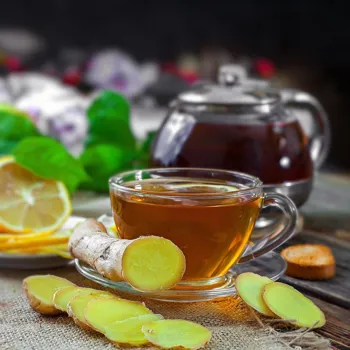
But its role goes beyond flavour and health. The journey of ginger is evidence of how a single ingredient and plant can have many cultures and cuisines that enjoy the produce from it.
Indian desserts influence cultures with sweet dishes like halwa and gulab jamun
The Sweet Influence of Indian Desserts Many believe that Indian desserts have impacted cultures who are in the area. An example is halwa, a sweet dish made of semolina, flour, or lentils. It has traveled into many cultures like the Middle East.
Gulab jamun, dipped in rose water syrup are also a part of many cultures as well. Thus Indian desserts have influenced multiple countries who have an affinity for sweet food items.
Indian flavors' global influence on cuisine connects cultures
So, the next time you're enjoying a spicy curry, a warming cup of chai, or even a simple lentil soup, remember the incredible journey of Indian flavours around the world. These ten examples are just a glimpse into the deep and lasting influence of Indian culture on global cuisine.
It's a testament to the power of food to connect cultures, create new tastes, and enrich our lives. After all, everyone loves to eat!
AI Generated Content. Glance/InMobi shall have no liability for the content